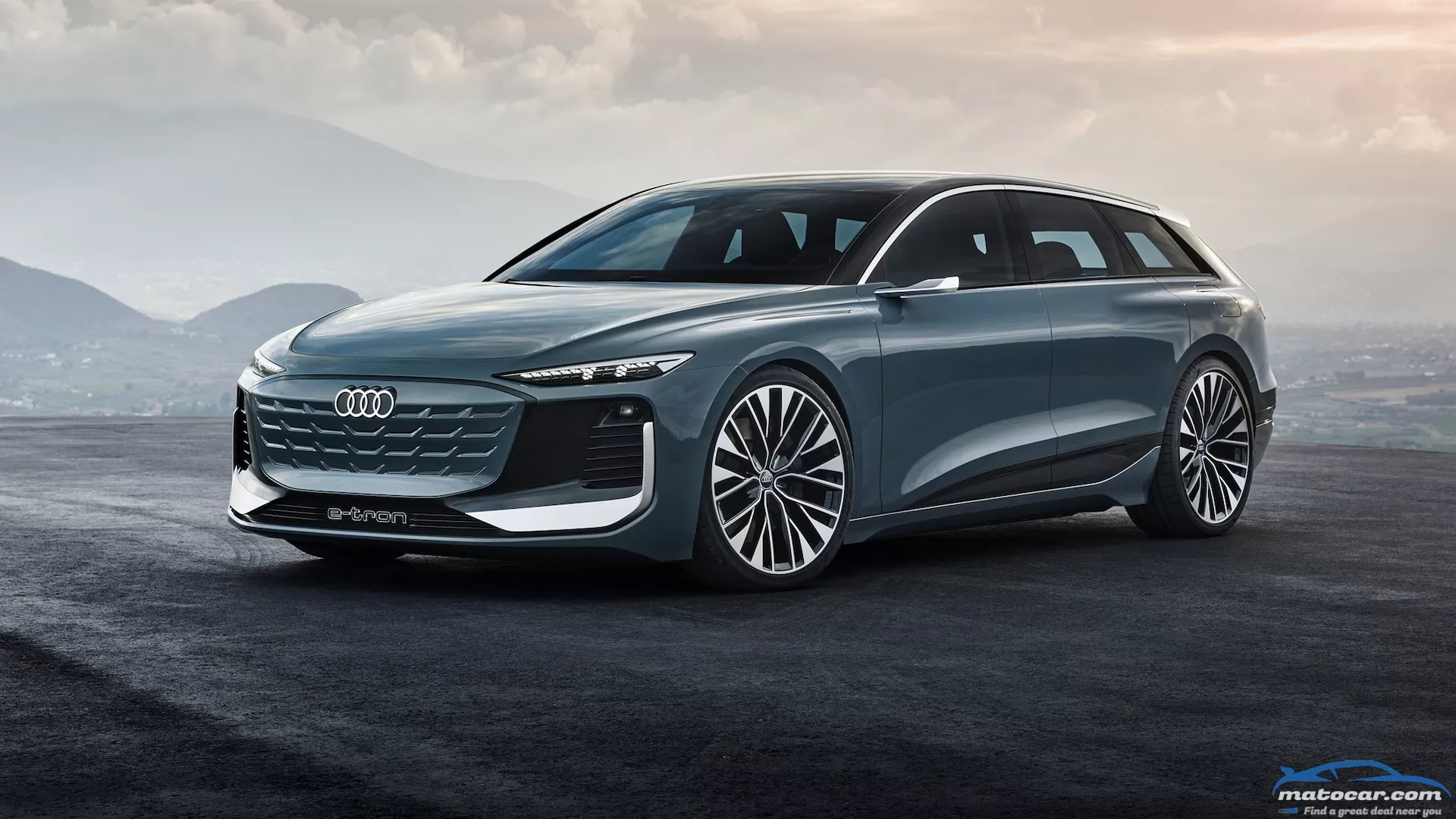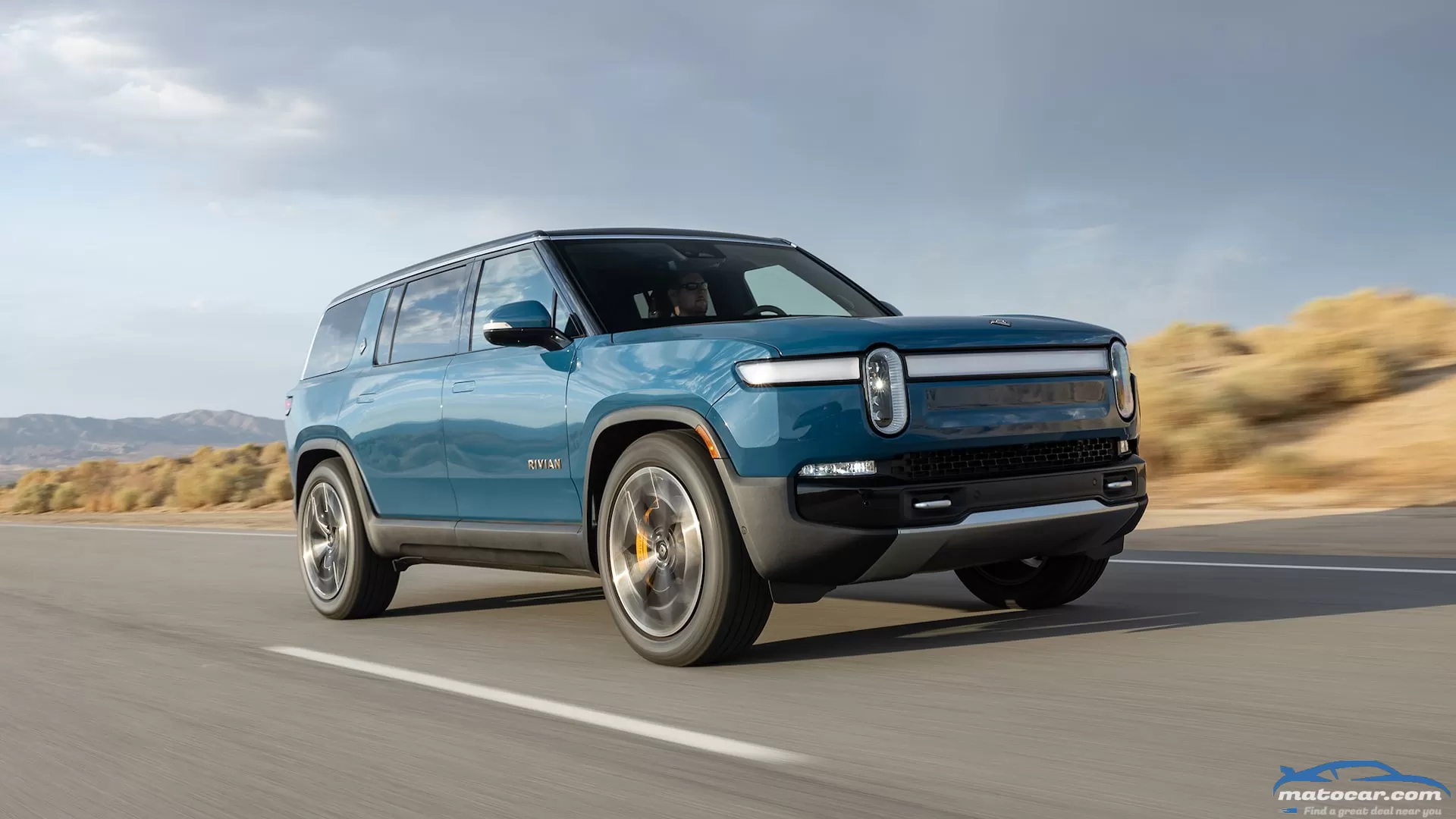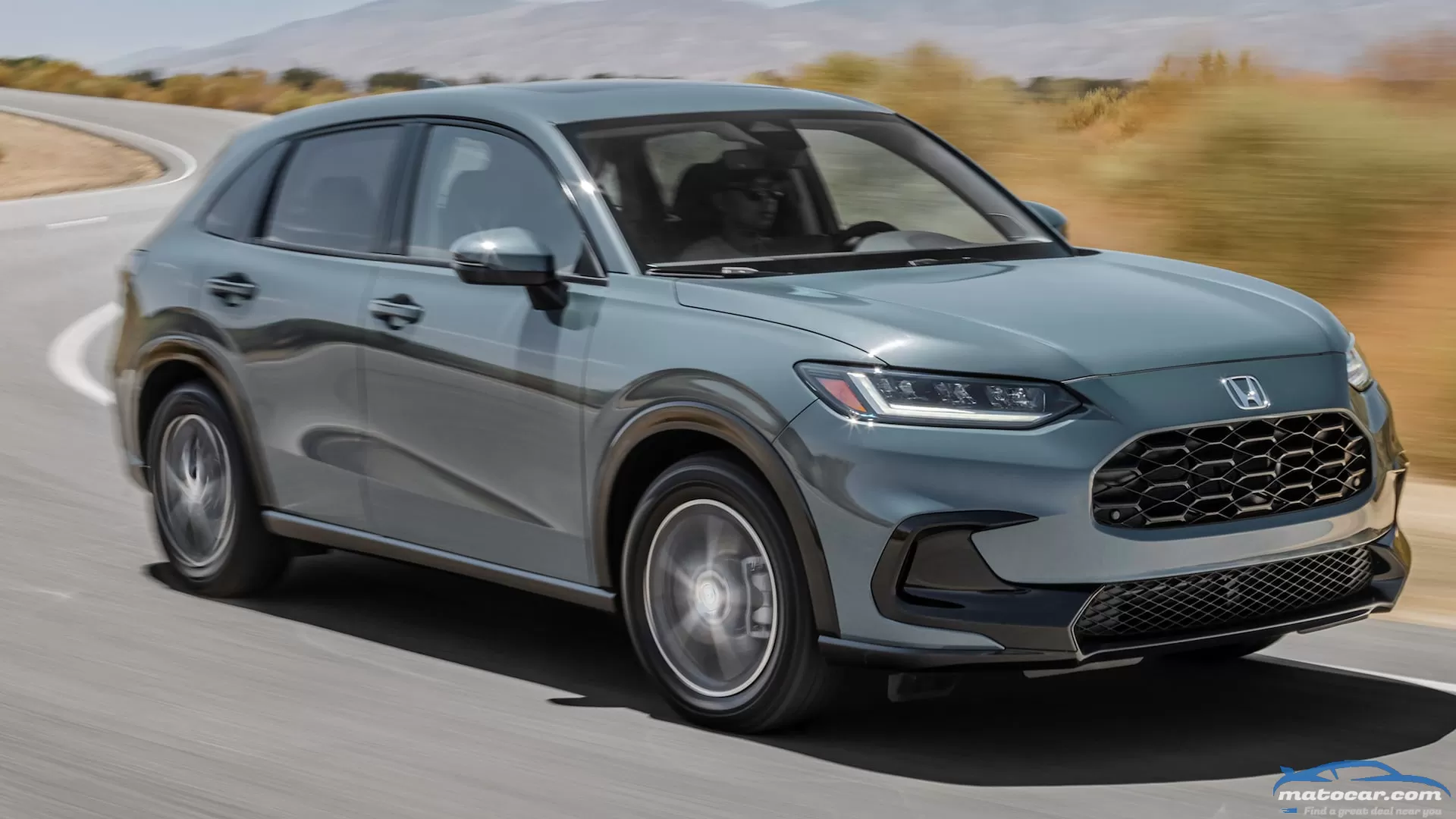No Mo’ ’Splosions? Nanotech Energy Unveils Fireproof Graphene Battery

Wow, the claims Nanotech Energy makes for its new graphene battery, just presented at CES Unveiled, are impressive: It retains more than 80 percent of its rated capacity through 1,400 cycles, can charge "18 times faster than anything that is currently available on the market," maintains performance at extreme temperatures (-40 to 140 degrees F), holds charge at temperatures as high as 350 degrees and won't catch fire when penetrated with a nail or heated to more than 1,300 degrees, don't require exotic materials, can be manufactured on existing equipment in various form factors (cylindrical, pouch, etc. ), and is going to be produced in a new plant in Nevada slated to open in the fourth quarter of 2022.
Given all that, we wouldn't be surprised to learn that driving an EV powered by such batteries also promoted weight loss and prevented tax audits. Here's what we know about the Nanotech Energy graphene battery.
Graphene Battery Electrodes
Graphene has been making a lot of news lately, and we explained what it is here, but here's a quickie recap: the graphene in use here is a sheet of one-atom-thick carbon. Nanotech Energy is using graphene sheets to transfer energy to and from its new batteries. Graphene is extremely strong yet pliable, which makes it capable of stretching as the lithium ions come and go from the electrodes, causing volume changes. Graphene's strong electrical conductivity lowers the battery's internal resistance, which lowers internal heat generation, enabling faster charging.
OrganoLyte Electrolyte
Nanotech Energy has yet to release exact chemical specifications of its proprietary liquid electrolyte, but it has provided MotorTrend with some general information. Most electrolytes in use today involve dissolving a lithium salt in a liquid material composed primarily of linear and cyclic chain carbonates (molecules that involve a carbon atom attached to three oxygen atoms). These liquids are typically flammable (see the photo below). OrganoLyte reportedly is not, if photos (at top) of a propane torch applied to the material are to be believed.
While no specifics have been confirmed, the name suggests the material still centers around organic chemistry (meaning its molecules involve carbon atoms and covalent bonding, not ecological farming), and we're assured they're not exotic or expensive.
New Proprietary Separator
The graphene battery electrodes must be separated by a material through which the ions transfer, and here again Nanotech Energy has replaced the typical polyolefin separator with a new material that improves on polyolefin's thermal stability. This also helps to make the batteries safer.
Easy to Manufacture
Current manufacturing equipment and processes currently in use to make lithium-ion pouch and cylinder batteries can produce Nanotech Energy's graphene battery, and a factory designed to build them is currently slated to open in late 2022.
When Can I Buy a Graphene Battery?
Perhaps as early as next year, but we expect initial production to concentrate on the consumer electronics market. That's because it's extremely unlikely that sufficient durability, reliability and safety testing on all these new materials when applied toward an automotive use case can be completed in less than a few years.
You may also like
With back-to-back electric vehicle reveals last year, including the all-electric A6 E-Tron Concept, Audi just unveiled another close-to-production EV model. Underpinned by the same platform as the upcoming A6 EV sedan, the Audi A6 Avant E-Tron Concept is a peek at the monolithic electric station wagon version with an ultra-long wheelbase. Slated to join the four-ring brand next year, the battery-powered A6 Avant E-Tron will effectively be the first electric station wagon available in the U.S.Powertrain and RangeA Quick OverviewAudi equipped this concept car with advanced exterior lighting technology designed and developed in-house. Drivers can configure the LED headlights and OLED tail lamps with various custom light signatures. High-resolution projectors built into each side of the car illuminate the ground and function as greeting lights and warning signals for approaching bicyclists.And finally, while recharging the battery, occupants can play videos games on a virtual screen projected onto the wall in XXL format via the LED headlights. (The car must be parked and, of course, facing a wall.)Design AnalysisPricing and Availability
rivian r1s Full OverviewPros908 lb-ft of torqueUnique styling316 miles of electric range ConsTight third rowStiff ride on all-terrain tiresExpensiveDriving loads of new and flashy cars around Los Angeles, we're used to curious people stopping us to ask questions. From testing supercars to SUVs, we're lucky to do what we do for a living, and we love talking to folks about the latest trends in the automotive industry. But nothing tops our experience with the 2022 Rivian R1S electric SUV; every time we parked it, strangers approached immediately to ask us questions about one of the hottest vehicles on the market.Indeed, with its charming styling, room for seven passengers, and impressive technology, the 2022 Rivian R1S gets a lot of love, even in L.A., where you often see some of the world's rarest and most expensive vehicles. We were amused to see people's reactions when we talked to them about its range or power numbers.Same But DifferentAlthough the Rivian R1S SUV and R1T pickup truck share the same chassis and four-motor setup, there are significant differences, with length being the biggest one. The R1S' wheelbase is 14.8 inches shorter, and its overall length measures 200.8 inches—16.3 inches shorter than the truck. Those who park their R1S in a garage will note the difference, and those who go off-roading will also see better breakover and departure angles thanks to the shorter wheelbase and rear overhang.InsideJust like in the R1T, the 2022 Rivian R1S' interior is elegant, futuristic, and cool. The minimalistic approach provides a vibe that blends premium materials with lots of technology to make a great impression on anyone who rides in it. From the open-pore wood that combines ambient lighting elements to the minimalist switch gear, the cabin feels like it's next generation. Many cues appear taken from Tesla—there's no push-start button and no buttons to adjust the side-view mirrors or telescoping wheel, and the shifter is a stalk on the steering column. But unlike a Tesla Model 3 or Model Y, a second screen in front of the driver acts like a digital instrument cluster to display vital information.Although the R1T offers more storage options than the R1S electric SUV, the amount of storage in the R1S remains impressive. We do miss the R1T's gear tunnel, but the R1S has a deep hidden compartment beneath the cargo floor that can store a carry-on bag. Plus, the frunk is just as expansive as in the R1T, and it has a drain plug so you can use it for tailgating (or should we say frontgating?). There are also drawers under the front seats to keep some documents handy, should you have the need to do so.Second-row space is more than decent, with plenty of real estate for adults in terms of legroom and headroom. People sitting back there will enjoy heated seats and USB-C ports rightly placed on the seats in front of them, making it easy for them to charge and use their devices at the same time.However, accessing the third row is a little tight for adults. The space between the C-pillar and the second row is narrow. Once you make it back there, second-row passengers need to move their seats up a few inches for third-row riders to have enough legroom. Because the third row is so low to the floor, most peoples' knees will be at a higher position than their hip point, which is uncomfortable for long trips.Although the 2022 Rivian R1S' interior space isn't spectacular, it's also not bad. At 6 feet tall, you wouldn't want to spend much time in the third row, but you would likely be OK with short trips in the city. We're sure most R1S owners will keep the third row folded so they can enjoy more cargo space. Second-row seats can be folded from the cargo area with an electric release, but the third row must be folded manually, which is a bit odd—especially for an SUV that costs more than $95,000. Fold the second and third rows, and you'll get a flat floor with ample room for your gear or for Home Depot trips.Like with most electric cars today, the R1S' center screen serves as the command center. Besides displaying the nav system and controlling the A/C, heated and ventilated seats, and other basic functions, the screen allows drivers to switch between driving modes, raise or lower the electric SUV's air suspension, and turn on Pet Comfort mode (and, eventually, Camp Mode). Pet Comfort mode keeps the air conditioning on inside the cabin and displays a message on the screen telling outsiders the pets are in good condition.The DriveFew SUVs in the world can do what the 2022 Rivian R1S does. With its quad-motor setup, which delivers 835 hp and 908 lb-ft of torque combined, the R1S is one of the quickest SUVs MotorTrend has ever tested. Yes, you read those numbers right; no production Lamborghini, for example, makes this kind of power. A seven-passenger SUV producing this kind of punch is otherworldly.During our instrumented testing, the R1S with all-season tires accelerated to 60 mph in 3.1 seconds and completed the quarter mile in 11.6 seconds at 111.2 mph. Opting for the all-terrain tires holds you back by just 0.1 second on the way to 60 mph and only 0.2 second in the quarter mile.These numbers are even more impressive when you look at the Rivian's heft. Because of its 135-kWh battery pack, the R1S weighs more than 3.5 tons, and you definitely feel it on the road. Its low center of gravity and nimble steering, however, reduce the perception you're driving a lumbering behemoth.On city streets, the 2022 Rivian R1S is quiet and composed, delivering power to pass just about anyone who's around you. It doesn't hesitate to merge onto the freeway, either, and you feel your back pressed against the seat when doing so. Bumps and ruts are absorbed nicely thanks in part to Rivian's cross-linked suspension. And depending on the drive mode you select, you can have different experiences behind the wheel. Conserve disconnects the rear motors to save power. All Purpose is the normal mode, with all four motors working together. Sport is the most fun of all, naturally. It's worth noting we spent most of our time driving the Rivian R1S with all-terrain tires, and we felt a stiffer ride and heard a bit more noise in the cabin—things to consider if you're interested in this option.Yeah, But How Safe Is It?Unfortunately, neither IIHS or NHTSA has crash-tested the Rivian R1S or the R1T, but both are equipped with a long list of active safety features. With Rivian Driver+, the R1S bundles adaptive cruise control, lane keep assist, and highway assist to hold the SUV centered in its lane while keeping a good distance to the car in front. Two taps on the shifter stalk activate the entire suite, and it will alert you if the road becomes unclear or if the systems can't handle the situation.Every R1S is equipped with cameras, radars, and other sensors, and all of them work together in pursuit of a safe experience.Should I Buy the Rivian R1S?The 2022 Rivian R1S is an impressive electric SUV with lots of technology, storage options, and power. It's also one of the most fun SUVs we've driven—something you don't often hear about a seven-passenger giant.All of this is great, but pricing will certainly keep a lot of people away from the R1S. Our two test vehicles were priced at $96,000 and $98,750, and as much as we liked its attributes, we wondered aloud whether that's too much for an electric seven-passenger SUV. Prices recently suffered a steep hike, and we wouldn't be surprised if Rivian increases the R1S' sticker yet again. But if you can afford it and you're looking for a family SUV while thinking of switching to electric power, the 2022 Rivian R1S checks all the boxes.Looks good! More details?2022 Rivian R1S Launch Edition (A/S tire, A/T tire) Specifications BASE PRICE $91,500 PRICE AS TESTED $96,000, $98,750 VEHICLE LAYOUT 2 x Front- and 2 x rear-motor, AWD, 7-pass, 4-door SUV MOTOR TYPE Permanent-magnet electric POWER (SAE NET) 415 hp (front), 420 hp (rear), 835 hp (comb) TORQUE (SAE NET) 413 lb-ft (front), 495 lb-ft (rear), 908 lb-ft (comb) TRANSMISSIONS 1-speed automatic CURB WEIGHT (F/R DIST) 7,068 lb (48/52%), 7,091 lb (48/52%) WHEELBASE 121.1 in LENGTH x WIDTH x HEIGHT 200.8 x 79.3 x 71.5 - 77.3 in 0-60 MPH 3.1, 3.2 sec QUARTER MILE 11.6 sec @ 111.2 mph, 11.8 sec @ 111.6 mph BRAKING, 60-0 MPH 121, 131 ft LATERAL ACCELERATION 0.82, 0.78 g (avg) MT FIGURE EIGHT 26.1 sec @ 0.71 g (avg), 26.4 sec @ 0.69 g (avg) EPA CITY/HWY/COMB FUEL ECON 73/65/69 mpg-e EPA RANGE, COMB 316 miles ON SALE Now Show All
honda hr-v Full OverviewProsHigh-quality interiorSpacious cabin for a small SUVStandard active safety tech ConsSlow, even for an entry-level SUVSmall 7.0-inch touchscreen on two of three trimsLess efficient than beforeTime for some crazy talk: The redesigned 2023 Honda HR-V might soon be the company's only SUV with an MSRP comfortably less than $30,000. That's not big news for car enthusiasts, but buyers not aware of the new 2023 Honda CR-V's upmarket move are in for a surprise. Suddenly, price-conscious CR-V intenders will be kicking tires on the more affordable HR-V, which takes on a more important role in Honda's SUV lineup. Those buyers will find in the 2023 Honda HR-V a refined ride with influences from the excellent Civic as well as from the outgoing HR-V—the latter not quite in the way we'd like.0-60-MPH Acceleration Versus Its RivalsAt MotorTrend, we track-test cars—even small SUVs like the 2023 Honda HR-V—so we can establish how each vehicle's performance compares to the competition. And in this Honda's case, it's not a great story.Every new HR-V is powered by a 158-hp naturally aspirated 2.0-liter I-4 good for 138 lb-ft of torque. Those numbers match the latest Civic, which uses the same engine. As you'd expect, the engine sweats less with the front-wheel-drive Civic sedan, which is hundreds of pounds lighter than our 2023 HR-V EX-L test SUV with more features and all-wheel drive.OK, so let's compare the new HR-V's 9.8-second 0-60-mph time to vehicles its own size. A 2022 Toyota Corolla Cross XLE AWD is nearly a half-second quicker (9.3 seconds), while a Subaru Crosstrek with a 2.5-liter engine is a startling 2.0 seconds quicker. As if that isn't enough, the AWD Subaru is also more efficient. Even against the last-gen HR-V, the new model comes up short; a 2019 HR-V Sport AWD we tested reached 60 mph in 9.6 seconds.Behind the wheel, the HR-V feels slow, but you can still execute highway passes as long as you plan them out a bit. That type of compromise used to be a given in this segment, but that's no longer the case. The Kia Seltos, Subaru Crosstrek, and a couple other competitors won't feel quite as slow as the HR-V. It's not the end of the world, and it won't be the top priority for most buyers, but it's worth noting. This engine doesn't show much power until it revs past 4,000 rpm.Braking and HandlingThe 2023 Honda HR-V doesn't gain competitive ground in 60-0-mph panic-braking, either. Or, rather, it covers more ground than its competitors. A distance of 125 feet is fine for a small SUV like this one, but so is 120 feet (the Corolla Cross), 114-124 feet (two Crosstreks we've tested), or 114 feet (a 2019 HR-V). Clearly, this Honda isn't a numbers car, but at the test track we found brake-pedal feel to be fine for a daily driver. The brakes also remained trustworthy and consistent across our figure-eight testing, being both effective and predictable.On the figure-eight course—a MotorTrend evaluation that assesses acceleration, handling, braking, and the transitions in between—the 2023 HR-V finished in 28.5 seconds at 0.56 g (average), placing it behind the most recent Subaru Crosstreks, and the Toyota Corolla Cross and Kia Seltos Turbos we tested. The steering felt a little heavy but was precise. The engine displayed merely adequate power, and made lots of noise.The new HR-V's story improves away from the track. Its continuously variable transmission feels well-tuned around town and on the highway, delivering smoother performance than any conventional or dual-clutch automatic ever could. The suspension is well-damped for a small and inexpensive SUV, too. In other words, put up with the mild acceleration and there's a payoff in the general feeling of solidity you don't get with all of the HR-V's rivals.Ups and DownsHonda backs up that feeling with an interior sprinkled with surprising and delightful touches. There's soft material on the side of the center console (perfect for resting your leg against during a long red light), and you get the honeycomb dash-trim design we've seen on the Civic and CR-V. That real metal trim disguises air vents and separates two physical knobs on top to control the audio system (volume and tuning), as well as three knobs below for the HVAC system. A small open storage area can hold your keys, and the back seat is spacious for such a small SUV.You simply don't get these touches on every HR-V competitor. Where many of them make up ground is digital screen-space. The 2023 HR-V LX and Sport trims come standard with a 7.0-inch touchscreen—smaller than what you can get elsewhere; a larger 9.0-inch unit comes on the top EX-L trim. Apple CarPlay and Android Auto are standard across the line, but we'd welcome a bigger screen or one tilted a bit toward the driver on the lower two trims. By the way, we asked Honda whether it expects any feature omissions due to parts shortages affecting the industry, and the automaker said all HR-Vs should have "the full features and functions listed for each trim level." Great.The entry-level SUV segment is much larger than it was when the first-generation HR-V arrived, which helps put the Honda's pros and cons into perspective. With fuel economy and driving range, for example, it doesn't quite keep up with our chosen competitive set. An EPA-rated 26 city/32 highway mpg with FWD and 25/30 with AWD is not bad on its own, but it's inferior to the 2022 Toyota Corolla Cross—31/33 mpg with FWD and 29/32 with AWD—and the AWD-only Subaru Crosstrek. For the 2023 model year, the Subaru comes in at 28/33 mpg with its standard 2.0-liter engine and 27/34 with the 2.5-liter unit.The Subaru also holds a huge advantage compared to the Honda in combined city/highway driving range; you'll travel about 100 miles farther in either automatic-transmission Crosstrek than you will in the Honda.The TakeawayThe Honda HR-V remains a good choice in its second generation. But with its physical growth, the new 2023 model is slower and less efficient than a couple key competitors. The former isn't a huge deal for an entry-level SUV, but if you don't need to make that compromise, why should you? In the HR-V's case, it would be because of the trust some have in the Honda name and because the SUV drives well. The Civic-based platform means the 2023 Honda HR-V feels good on the road before you even consider its spacious interior. Standard Honda Sensing safety tech and good anticipated safety-test results should also provide buyers with confidence.Honda loyalists should also appreciate the new interior design and improved HVAC system, but cross-shoppers will want to consider what they really want from an inexpensive SUV. The Kia Seltos is spacious and much quicker, but it lacks a five-star overall safety rating from NHTSA. Subaru's popular Crosstrek offers standard AWD, better efficiency, and a good driving experience, but doesn't look like a traditional SUV.Especially in LX and Sport trims, the 2023 Honda HR-V represents the brand well enough in this crowded space. For the rare customer seeking a loaded HR-V EX-L, however, we suggest giving a closer look to the competition, and especially the new 2023 CR-V.Looks good! More details?2023 Honda HR-V AWD (EX-L) Specifications BASE PRICE $30,195 PRICE AS TESTED $30,590 VEHICLE LAYOUT Front-engine, AWD, 5-pass, 4-door SUV ENGINE 2.0L port-injected DOHC 16-valve I-4 POWER (SAE NET) 158 hp @ 6,500 rpm TORQUE (SAE NET) 138 lb-ft @ 4,200 rpm TRANSMISSION Cont variable auto CURB WEIGHT (F/R DIST) 3,271 lb (58/42%) WHEELBASE 104.5 in LENGTH x WIDTH x HEIGHT 179.8 x 72.4 x 63.4 in 0-60 MPH 9.8 sec QUARTER MILE 17.5 sec @ 83.0 mph BRAKING, 60-0 MPH 125 ft LATERAL ACCELERATION 0.80 g (avg) MT FIGURE EIGHT 28.5 sec @ 0.56 g (avg) EPA CITY/HWY/COMB FUEL ECON 25/30/27 mpg EPA RANGE, COMB 378 miles (est) ON SALE Now Show All




0 Comments